Pia Minixhofer, Bernhard Scharf, Sebastian Hafner, Thomas Romm
Growing cities
In the coming years, more and more people will live and work in cities (UN 2018). The accompanying need for more housing and infrastructure is causing construction activity to increase. Soils are being sealed and green spaces destroyed as construction progresses. Increasingly, this supposed success comes at the expense of people’s quality of life, who suffer the consequences of heat buildup, poorer air quality, and damage from flooding.
Consequences of growth
The consequences of urban growth are also reflected in the amount of excavated materials and construction waste generated by construction activities. In Austria, they account for 72.7% of the total waste generated. In 2018 alone, nearly 37.1 million tons of excavated material was generated, with approximately 25.9 million tons of this still ending up in landfills (Umweltbundesamt 2020). The amount of waste from construction increased to over 11.1 million tons (Umweltbundesamt 2020). This corresponds to a payload of 10 million triaxial trucks. For use and disposal, the material is mostly transported over long distances and contributes to the enormous emissions of the construction industry. Globally, 38% of CO2 emissions are due to construction activities (UNEP 2019).
Forward-looking, resource-conserving measures
An active contribution to effective climate change adaptation measures and against rapidly increasing soil sealing is the use of excavated materials and construction residues on site. Excavated materials are already being reused for terrain modeling, embankment fills or backfills, but this often does not correspond to the potentially high quality of the soil. Construction waste can already be sorted during the construction process and recovered as secondary raw materials. A combination of these approaches is the production of urban mining substrates.
Solution contribution: Urban Mining Technical Soil
“Urban mining is a thought model for the systematic collection and recovery of (secondary) raw materials stored in buildings, in infrastructure and in products. But it also includes research and the development of new techniques for an increasingly efficient recovery of raw materials and for their future, intelligent use.” urbanmining.at
With the concept of urban mining, the city becomes a source of raw materials as demolition materials find a new use again. The idea is not new and is already being pushed by the EU in its own Circular Economy Action Plan to, among other things, counteract soil sealing and keep excavated materials in circulation (European Commission 2020).
The problem of urban mining is to find usable materials in demolition or excavation, to separate them by type and to reuse them where they are needed. Initiatives such as the BauKarussell in Austria prove that this is absolutely possible if the necessary logistics are behind it. For example, demolition materials cannot only be reused elsewhere, such as bricks or windows, but can also be further processed, such as construction waste to concrete aggregate. Reuse is technically feasible and makes sense economically. Not only are disposal costs saved, but income is also generated through resale (Hafner 2020).
Urban Mining Technical Soils: re-use
One solution approach that BauKarussell helped to develop on a larger scale is the extraction of (secondary) raw materials and the reuse of the materials across project boundaries on other construction sites. In a specific case, this can mean that roof substrate is removed from an existing building and (temporarily) stored in order to then be used for a new green roof at another location. The more construction sites come together here to exchange and reuse materials, the more complex the construction logistics become.
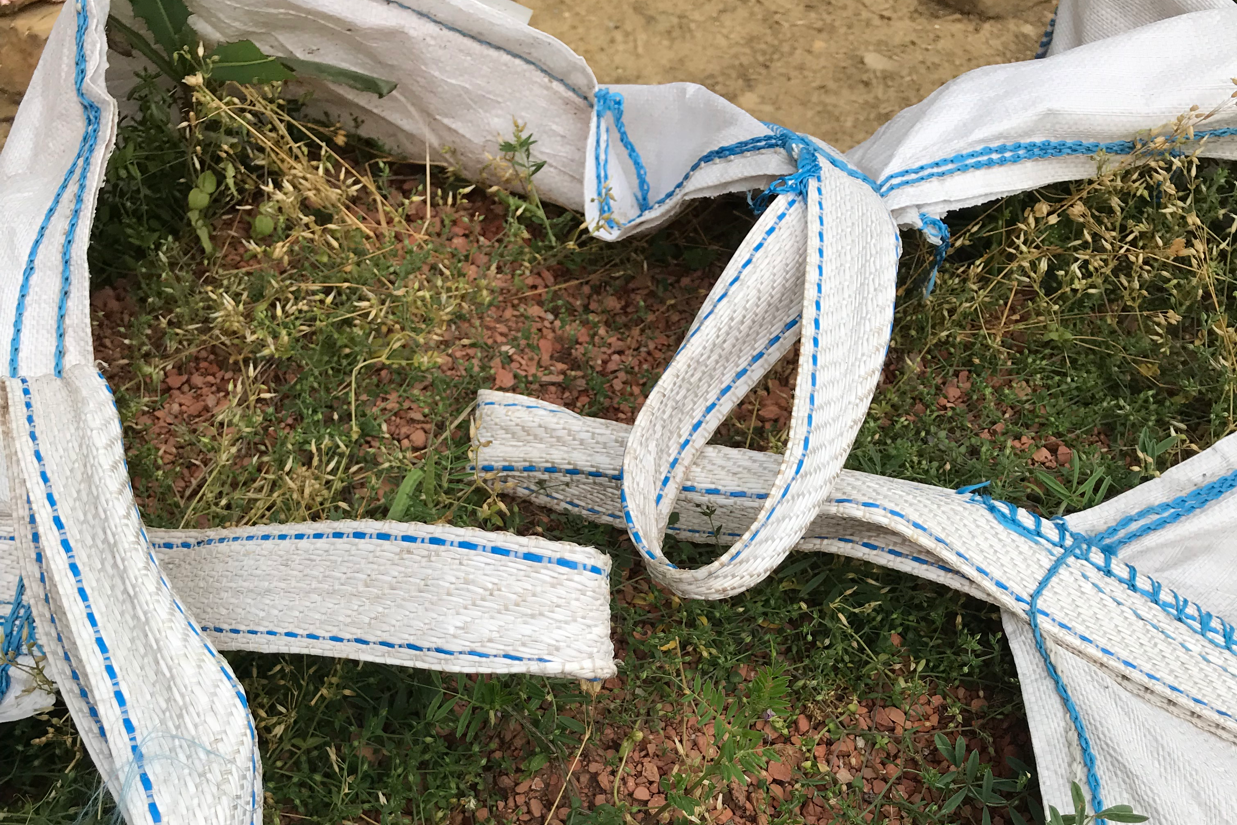
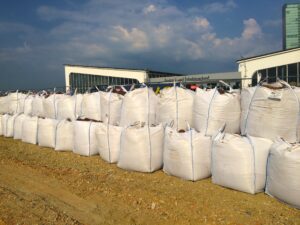

Urban Mining Technical Soils: re-purpose
Another alternative approach is the processing of excavated materials, which, depending on their quality, can be reused as planting substrates for outdoor landscaping. Again, a major aspect is handled by construction logistics, which must coordinate the storage, preparation, mixing, and installation of the newly reclaimed substrates.
The reuse of excavated soil is preceded by a quantity survey and geotechnical, soil chemical and physical analysis of the materials. This data is necessary in order to precisely match the excavated materials, such as sand and topsoil, to new applications. For example, new concrete can be made from sand directly on site, the various soil types can be used for new substrates or backfill, or the excavated material can be reserved for other purposes.
The next step is to organize (interim) storage and processing. Efficient construction logistics are required here to clarify legal issues and have the materials ready at the right place at the right time. For this purpose, not only the excavation quantities but also the substrate requirements must be determined. Then it can be determined which quantity will be used for crushing and screening and which will be stored for the time being.
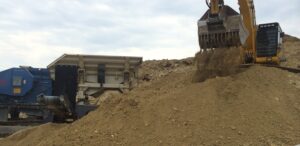
Accompanying Urban Mining Research
In cooperation with the Institute of Soil-Bioengineering and Landscape Construction (IBLB) at the University of Natural Resources and Life Sciences, Vienna, material compositions were determined for specific construction projects in order to create high-quality technical soils from the excavated soil.
First and foremost, the mixture of substrates for the technical soil is always based on the intended use. Based on the use scenarios of the landscape planners, the technical soil requirements are known and can be mixed according to these specifications. The mixing is carried out according to a program specially developed at IBLB, with which the mixing ratio is determined on the basis of grading curves according to mass and volume. In this way, adapted mixing ratios can be determined almost automatically for different substrates, such as for tree plantings, lawns or gravel turf, which can be implemented in a simplified manner during paving.
The technical soils have been mixed for the research project and installed in mock-ups as a preliminary test to investigate plant growth in more detail. The installation is carried out under consideration of the common installation technique and in accordance with standards and guidelines. Further research projects are underway at the University of Natural Resources and Life Sciences, Vienna, to also integrate construction waste into the development of the substrates. The promising results enable the preliminary tests to be scaled up to real construction projects.


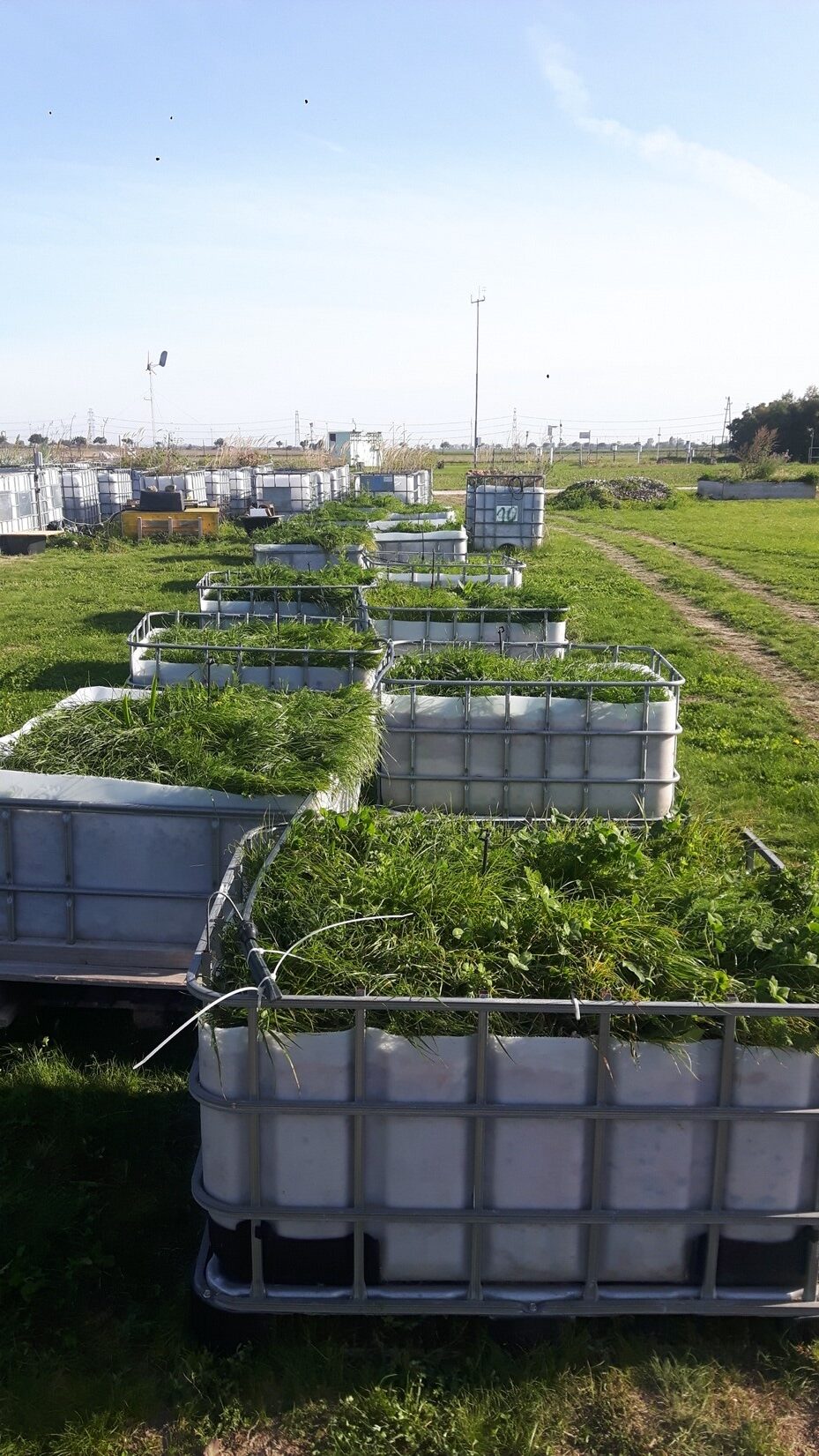
From the laboratory to large-scale implementation
The implementation of these results took place at the construction projects Wildgarten, Village im Dritten and Biotope City Wienerberg, among others.
The Biotope City Wienerberg construction project in Vienna developed its own criteria for recycling construction waste and effectiveness for greening measures. For the Biotope City Wienerberg, excavated material was reused on site, existing buildings were deconstructed, and the materials were reinstalled here and for other construction projects. A local crushing and screening plant on site saved vast amounts of CO2 emissions and money, by eliminating the need for removal, processing and hauling back to the site. The local processing recovered crushed material in various grain sizes for use as drainage gravel, e.g. engineered fill material. However, the production of technical soils could neither be realized due to the lack of excavated material, nor the production of concrete with an on-site concrete plant using sand obtained locally.
This was implemented for the first time in the course of the realization of the Wildgarten urban development area under the coordination of ARE Development. The non-renewable resource soil was actually treated as a protected good in this project and saved from landfill to the extent of about 14,000 m³. The majority of the excavated soil was mixed on site with crushed sandstone and reinstalled as a turf base layer. Around 4,000 m³ could be given to the Village im Dritten project, also an urban development area.
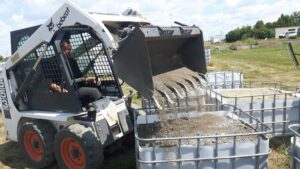
Challenges for implementation
There are still some challenges to widespread implementation of urban mining technical soils. Currently, there is a lack of defined, prescribed processes that make reuse and installation low-threshold. Lack of definitions for quality controls hinders the dissemination of the new method.
In Austria, the interest of general contractors in large construction sites is still low, because unsuitable or even obstructive legal framework conditions in combination with the unknown processes that are not (yet) established in the usual construction process are sometimes met with a lack of understanding or the concept of urban mining technical soils or Circular Soil is completely unknown.
Vision of the future
International and European regulations and recommendations clearly point in the direction of a Circular Economy. However, this is not merely based on ideas and values regarding nature conservation or biodiversity. These regulations are driven by facts. They are based on a scientific consensus that our economic system cannot be sustained in its existing form and overcharges the ecosystem. The consequences of this primarily affect humanity itself.
One key to a circular economy is undoubtedly the sustainable use of limited resources, such as natural soils or materials and recyclables that have already been used.
To this end, it is urgent to solve many challenges related to urban mining. A standardized process must ultimately be mandatory for all project developers to ensure that
- local resources are recorded,
- an accurate quantity planning is possible,
- the findings are incorporated into digital planning tools such as BIM and construction logistics, and
- cross-trade planning is implemented.
The leading role here is played by construction logistics experts, who are supported by private and public logistics platforms.
The projects and approaches presented have shown that Urban Mining and Circular Soil are not academic concepts, but can be implemented in large-scale projects with the good will of all. But not only soil is protected, or transports and CO2 are saved, no, there are actually reduced costs for the construction managers. This foretaste of the age of the Circular Economy makes us optimistic that in the future no more soil will be wasted or destroyed and that this will appear to be a matter of course, just as today the trucks drive with valuable resources to landfills.
References and further information:
Biotope City Wien 2018: Biotope City is smart – Blue Global Report Smart Cities #12/2018. Link: https://smartcities.klimafonds.gv.at/wp-content/uploads/sites/3/BGR12_2018_Biotope-City.pdf
Kommission 2020: A new Circular Economy Action Plan. Link: https://eur-lex.europa.eu/legal-content/EN/TXT/?qid=1583933814386&uri=COM:2020:98:FIN
Sebastian Hafner 2020: Aus alt mach neu – Social Urban Mining (Progress 01/20, S.24-25). Link: https://www.progress-online.at/files/PROGRESS_0220_web.pdf – S.24-25
Umweltbundesamt 2020: Abfallwirtschaftliche Daten. Link: https://www.umweltbundesamt.at/umweltthemen/abfall/abfall-daten
UN 2018: 2018 Revision of the World Urbanization Prospects. Link: https://www.un.org/development/desa/en/news/population/2018-revision-of-world-urbanization-prospects.html
UNEP 2019: 2019 Global Status Report for Buildings and Construction Sector. Link: https://www.unenvironment.org/resources/publication/2019-global-status-report-buildings-and-construction-sector

